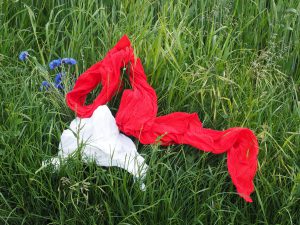
Capture the Flag has been a popular game for decades. It’s a great game to play after school or on the weekends with the whole family. Try inviting another family to play with you to get a bigger group together. You’ll have so much fun you may forget you’re exercising!
To start, find somewhere to play with a lot of room that also has places to hide (perhaps a park with plentiful trees and bushes). If you’re playing in a communal space, make sure to be aware of other people since you’re sharing the space! The only equipment you need are two flags (you can also use scarves or old dishcloths as the flags), one for each team. Split the space into two sides and divide your players into two teams. Each team gets time to hide their flag on their side without the other team watching. The goal of the game is to get the other team’s flag and bring it onto your own side. However, the opposing team can gently tag your teammates and make them “prisoners” that must be tagged by a teammate to get rescued.
Capture the Flag is a very active, competitive game. It’s especially great exercise for teens who may no longer have the time in their busy schedules to participate in organized sports but still want to stay active through competitive play. Capture the Flag can also include many players, making it a great social opportunity as well. Like younger children, teens should still be active for at least an hour most days during the week. For more tips on fitness for your teen, visit http://kidshealth.org/en/parents/fitness-13-18.html#.
To learn how to play Capture the Flag in more detail, visit http://www.usscouts.org/usscouts/games/game_cf.asp. Remember to play safe!
Who can you and your family play Capture the Flag with?